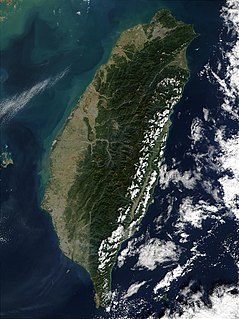
The equator lies about an hour's drive north of Quito. But until the invention of GPS navigation, the true "line" between the north and south hemispheres was as scientific as someone building a monument and claiming it was located at the equator.
Various markers have come and gone in the modern age, but only one lies exactly on the equator, and it's not the more popular site called Mitad del Mundo (Spanish for the Middle of the World, which is off by about 240 meters.
Then along came the
Quitsato Project--scientific research that began in June 1997 in an effort to establish the exact location of the imaginary line. As it turns out (big surprise), ancient cultures had already plotted the equator exactly. They had a complex knowledge of astronomy, which helped them plot agricultural calendars, climates, seasons and seasonal festivities.
The Quitsato Project found links between various archaeological sites, including one called "Catequilla," which is located at ground zero: latitud 0˚0'0". Although its significance had been lost over time, the research confirmed that the location of this place was not a coincidence.
To raise money for more research, and "to rescue, renovate and dignify the concept of the Middle of the World, which is seated at the base of the cultural identity of the Ecuadorians and their history," the group has built a giant sundial on the North Panamerican Highway between Quito and Cayambe, which marks the exact middle of the world. In exchange for a small donation, you can straddle the equator, with one foot in the north hemisphere and the other in the south.
The sundial measures 177 feet across, and has a tall orange pole in the center that marks the hour and month according to the transit of the sun. Even better, the structure can be observed by satellite thermal images.
Unfortunately, despite it's size and easy-to-find location, our driver had no idea where it was. When we told him we wanted to visit the site, he was baffled. He told us a police officer had directed him to another spot outside of Cayambe. When we got there, we saw an abandoned building with a globe in front.
One of my travel companions, Jennifer, knew instantly that we were in the wrong place. "No," I translated for her. "It's suppose to have a big sundial."

We asked the driver to call the phone number we had for the place, but he said he didn't have cell service in the mountains where we were. (I turned on my cell phone and got a perfect signal.) Then he said he didn't have minutes left on his phone card inserted. And wouldn't you know it, my cell phone didn't work properly (or I just couldn't figure out the right country and city prefixes).
We took a few pictures at the wrong place (see photo). I thought we had no chance of seeing the sundial, so made the most of the situation. Jennifer suffered miserably through a few photos at the fake equator, which we later deleted at her request.
And after a game of good cop, bad cop, the driver said, "Well, there is this one place I know about."

Perhaps he thought we would complain to the hotel that arranged the trip between Otavalo and Quito, or perhaps he thought we stopped in Cayambe for directions (when we requested a pit stop). Either way, he pulled off the road at Kilometer 47, and after peering skeptically at the site, we discovered we were in the right place.
Our driver explored the area with as much interest as the crazy gringas, staring intently at the scientific displays inside the orange tube. While he didn't apologize to me, he admitted that he thought we were confusing this spot with the ancient site, Catequilla, which was further away.
In the end, we all left with some cheesy photos, and as the Quitsato web site states, "a new perspective on our planet, one with balance and unity."
Furthermore, balance was restored between us and our driver, and we returned to Quito happy...and he made it home in time to watch Ecuador beat Chile 1-0 in soccer in a 2010 World Cup qualifier.
 We didn't have to work so hard for our food at lunchtime, however. A college friend, John Eastwood--who now lives in Taipei--invited us to join him at a Taiwanese institution, Din Tai Fung. This restaurant, which has other locations throughout Asia and even one in the U.S. (Los Angeles), is quite famous for its "Xiao Long Bao," known in the west as steamed dumplings. On his TV show, "No Reservations," Anthony Bourdain proclaimed the dumplings to be the best on earth when he visited in 2003. According to the Taipei Times, "He had nothing but high praise for the restaurant, especially when it came to the joint's 'incredible' crab dumplings."
We didn't have to work so hard for our food at lunchtime, however. A college friend, John Eastwood--who now lives in Taipei--invited us to join him at a Taiwanese institution, Din Tai Fung. This restaurant, which has other locations throughout Asia and even one in the U.S. (Los Angeles), is quite famous for its "Xiao Long Bao," known in the west as steamed dumplings. On his TV show, "No Reservations," Anthony Bourdain proclaimed the dumplings to be the best on earth when he visited in 2003. According to the Taipei Times, "He had nothing but high praise for the restaurant, especially when it came to the joint's 'incredible' crab dumplings."




























